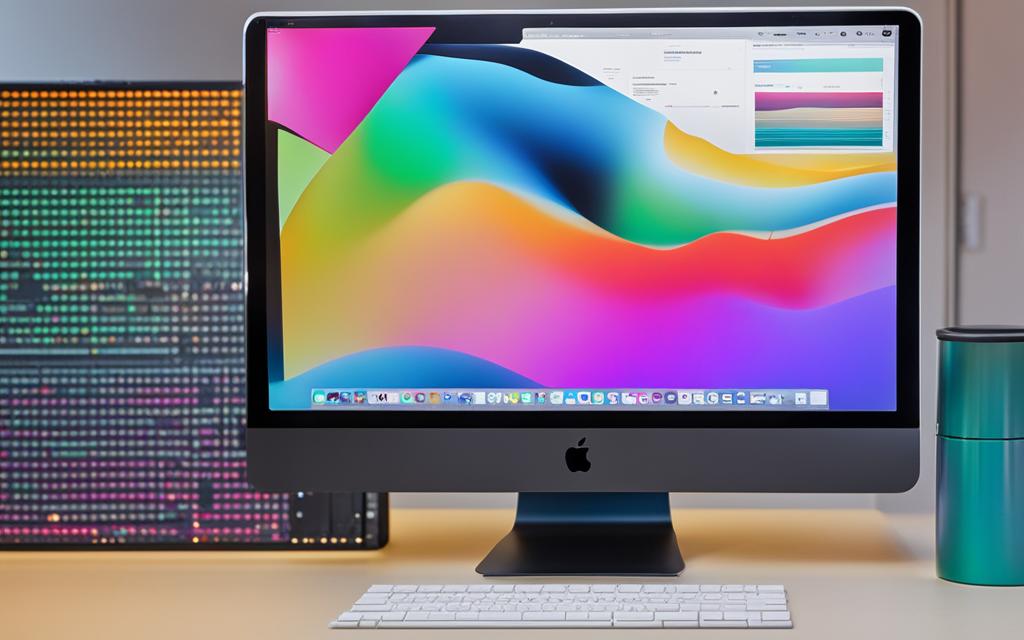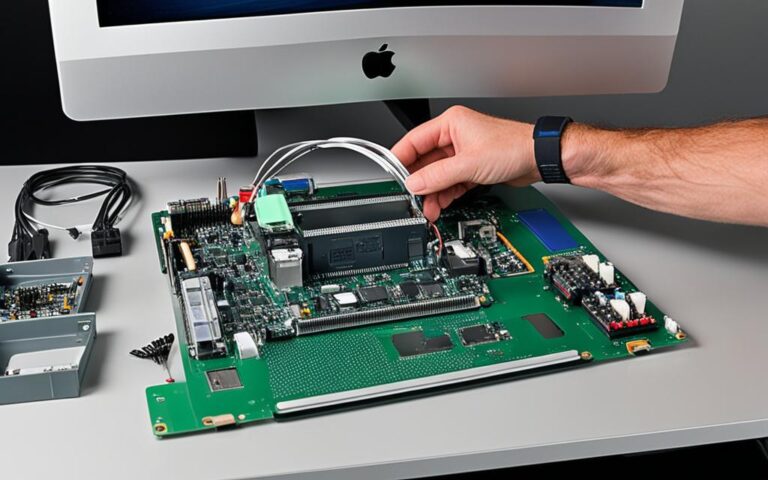iMac VoiceOver Functionality Repair
If you’re facing issues with VoiceOver on your iMac and it won’t turn off even after unchecking the box, there are a few potential solutions you can try. One user on an Apple Support forum reported experiencing this problem on macOS Catalina 10.15.5. First, go to System Preferences > Accessibility > Speech and ensure that all options are disabled. If the issue persists, you can try testing the iMac in Safe Mode or creating a new User Account to see if the problem persists. These steps may help resolve the VoiceOver issue on your iMac.
Accessibility features are an integral part of the Mac experience, empowering users with different needs to navigate and interact comfortably with their devices. iMac’s VoiceOver, a built-in screen reader, offers visually impaired users the ability to access their iMac through text-to-speech conversion and other advanced accessibility features. In this article, we will explore troubleshooting techniques for repairing VoiceOver functionality on your iMac, understanding the VoiceOver feature, comparing it with other screen readers, and conclude with insights for choosing the right accessibility option for your needs.
Understanding the VoiceOver Feature on iMac
VoiceOver is a built-in screen reader that was introduced by Apple in 2005. It is included with the Macintosh operating system, starting from Mac OS X 10.5, also known as Leopard. This accessibility tool offers refreshable braille support, improved navigation commands, and a comprehensive help system. VoiceOver is available on various Mac models, including the MacBook Air, and is automatically updated with each Macintosh update release. It offers visually impaired users the ability to navigate and interact with their iMac using text-to-speech conversion and other accessibility features.
With VoiceOver, visually impaired users can rely on the iMac as a powerful accessibility tool. It provides them with the means to effortlessly navigate through different applications, folders, and menus on their iMac. Users can rely on the text-to-speech conversion to have the content of their iMac read aloud, ensuring they can access and comprehend written information effectively.
“VoiceOver simplifies the user experience for visually impaired individuals, enabling them to independently use their iMac and access digital content. It provides a seamless and intuitive interface for navigating and interacting with applications, menus, and documents.”
In addition to basic functionality, VoiceOver offers advanced features like the VoiceOver Utility, where users can customize and fine-tune the settings to align with their specific needs. It provides options for adjusting speech rate, pronunciations, and even selecting different voices to make the reading experience more personalized and comfortable.
When using VoiceOver, users can navigate the iMac interface using keyboard shortcuts, gestures, or a dedicated braille display. The screen reader provides audible feedback, highlighting buttons, links, and other interactive elements, making it easier for visually impaired users to navigate and interact with their iMac.
VoiceOver also offers comprehensive support for various languages and braille codes, making it a versatile accessibility tool for users around the world.
To get started with VoiceOver on your iMac, simply go to System Preferences, select Accessibility, and enable VoiceOver from the sidebar menu. From there, you can explore the different settings and features to personalize your VoiceOver experience.
| Key Features of VoiceOver on iMac: | Benefits for Visually Impaired Users: |
|---|---|
| Refreshable Braille Support | Enables users to read braille output on a compatible display |
| Improved Navigation Commands | Allows users to efficiently navigate through applications and menus |
| Comprehensive Help System | Provides extensive documentation and assistance for VoiceOver users |
| Customizable Settings | Allows users to personalize speech rate, pronunciations, and more |
| Support for Multiple Languages and Braille Codes | Enables users worldwide to access their iMac in their preferred language |
Troubleshooting VoiceOver on iMac
When troubleshooting VoiceOver on your iMac, it’s important to check the settings in System Preferences > Accessibility > Speech and ensure that all options are disabled. If the issue persists, you can try testing the iMac in Safe Mode to isolate any potential software conflicts. Another troubleshooting step is to create a new User Account and test the VoiceOver functionality there. These steps can help identify any software issues that may be causing the VoiceOver problem on your iMac and guide you towards a resolution.
Comparing VoiceOver with Other Screen Readers
A comparison was made between VoiceOver on the iMac and Fusion 2019 running on Windows 10. While Fusion still outperformed VoiceOver in certain areas, the iMac had its own strengths.
The iMac’s VoiceOver had better battery life, making it a great option for visually impaired users on the go. Siri, the digital assistant on the iMac, also showed more advanced functionality in controlling and manipulating accessibility features compared to Cortana on Windows.
When choosing between the iMac’s VoiceOver and other screen readers like Fusion, it’s important to consider your specific needs and preferences. While Fusion may offer certain advantages, such as performance in certain areas, the iMac’s VoiceOver provides a seamless integration with the Mac ecosystem, enhanced battery life, and advanced control options through Siri.
Comparative Performance
| Feature | VoiceOver on iMac | Fusion 2019 on Windows 10 |
|---|---|---|
| Battery Life | Better | – |
| Integration with Ecosystem | Seamless | – |
| Advanced Control Options | Through Siri | Through Cortana |
| Performance in Certain Areas | Subject to limitations | Outperforms |
As seen in the table above, VoiceOver on the iMac excels in battery life, integration with the Mac ecosystem, and advanced control options through Siri. While other screen readers like Fusion may have their own strengths, the iMac’s VoiceOver offers a comprehensive accessibility solution with features specifically designed for Mac users.
When making a decision between screen readers, it’s important to evaluate your accessibility needs, consider the platform you’re using, and ensure compatibility with the software and applications you rely on. By comparing the features and performance of different screen readers, you can make an informed choice that suits your individual requirements.
Conclusion
In conclusion, the repair of VoiceOver functionality on your iMac can be achieved through simple troubleshooting steps. By checking settings, testing in Safe Mode, and creating a new User Account, you can address any issues that may be affecting the VoiceOver feature. The iMac’s VoiceOver is a powerful accessibility tool built into the Macintosh operating system, offering visually impaired users the ability to navigate and interact with their Mac efficiently.
While there may be other screen readers available, such as Fusion, the iMac’s VoiceOver has its own unique strengths. Notably, it excels in battery life, making it an ideal choice for visually impaired individuals who require extended usage. Additionally, VoiceOver seamlessly integrates with the Apple ecosystem, providing a comprehensive and intuitive experience for users.
When considering accessibility options, it’s important to weigh the specific needs and preferences of each individual. The iMac’s VoiceOver, developed by Apple, offers a reliable and feature-rich solution. Other screen readers, such as Fusion by Microsoft or Vispero, may have their own advantages. Ultimately, the choice between these options will depend on your personal requirements and the level of integration you desire.












